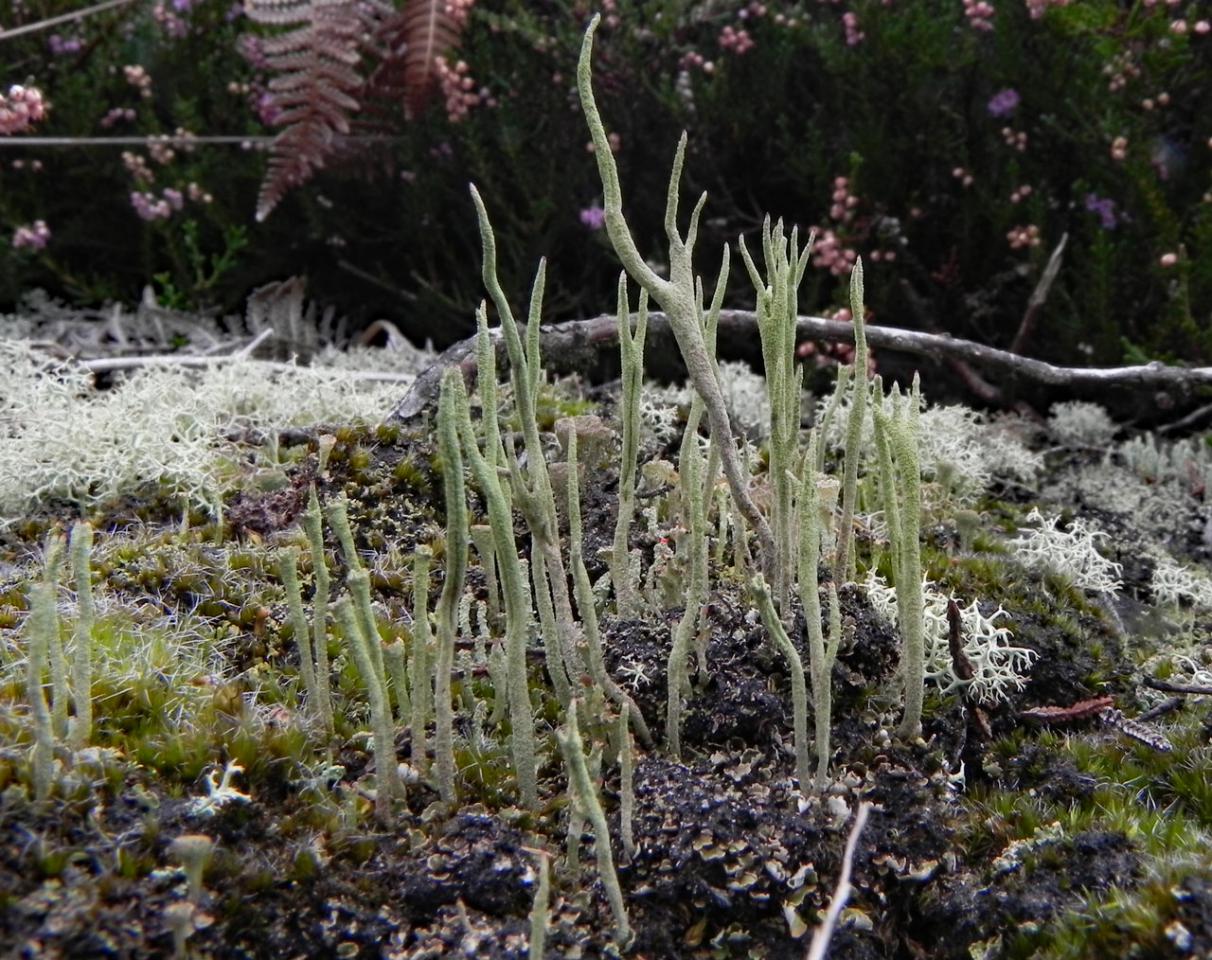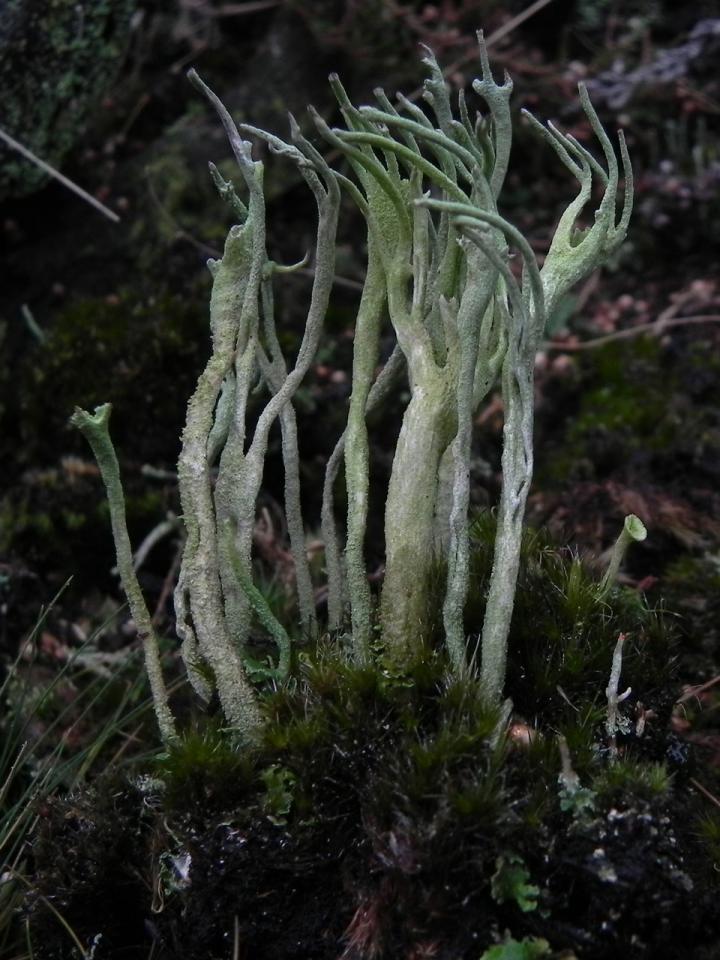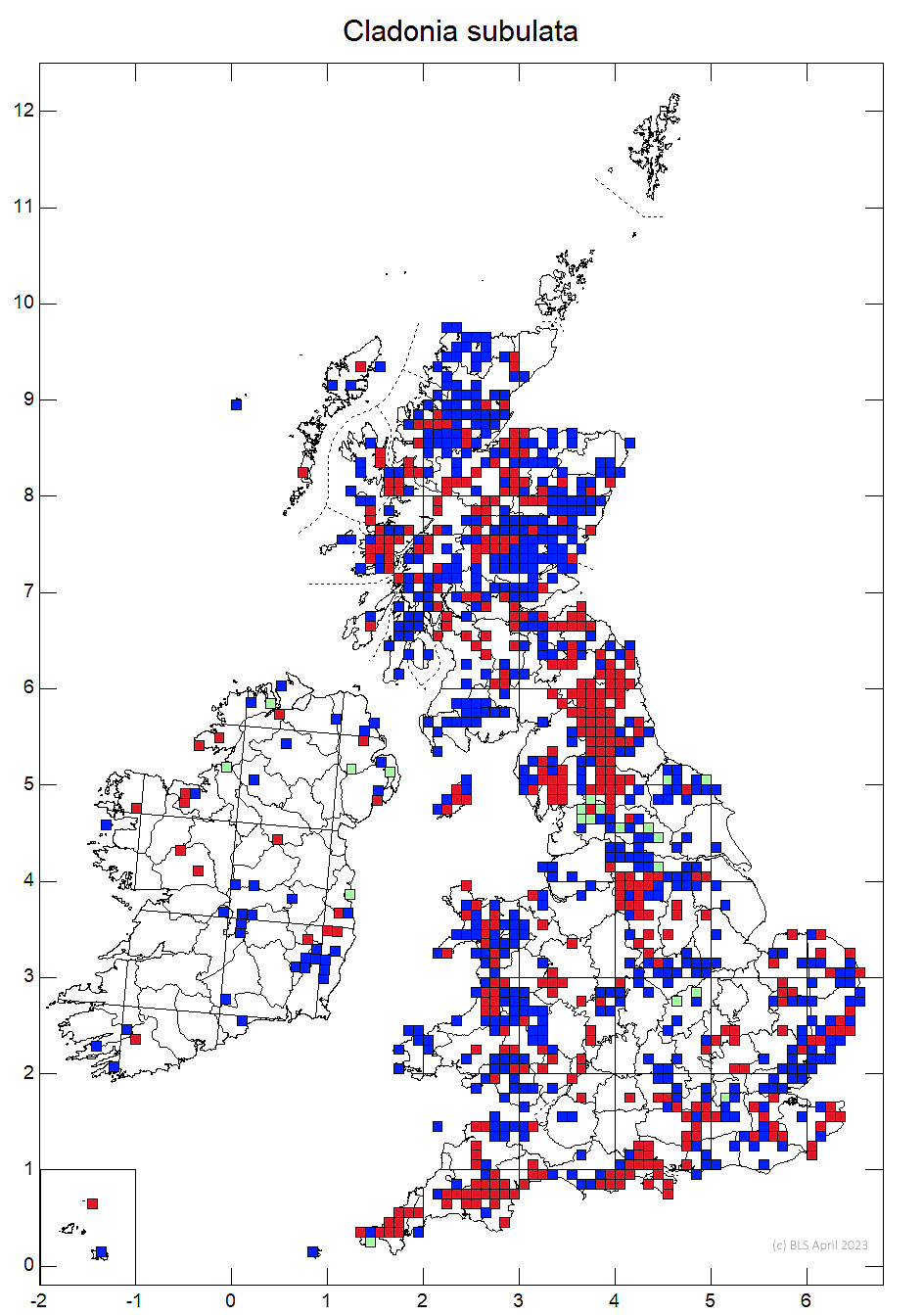Well developed, this is a very distinctive Heathtail, taller than similar species, with antler like irregular proliferations from the margins of the small cups and pointed apices on younger podetia. The podetia are normally usually entirely farinose-sorediate throughout, but can be corticate at the base. A common species on dry acid habitats, but rare or absent in wetter habitats. Most likely to be confused with Cladonia glauca and C. rei.
Podetia 2–6 cm tall, dull to bright grey-green, sometimes tinged brownish grey, thin, with pointed apices, sometimes with a furrow at the side of the podetium, often irregularly branched or furcate towards the apices and appearing antler-like, occasionally with irregular cups which often proliferate from the margins, usually entirely farinose-sorediate throughout, but sometimes ± corticate at the base which may be ± squamulose. Basal squamules inconspicuous or absent, elongate and deeply incised. Apothecia brown, rare, at the apices of podetia. Thallus C–, K–, KC–, Pd+ red, UV– (fumarprotocetraric acid).
Cladonia glauca is more glaucous-grey, contains squamatic acid (Pd–, UV+ white) or thamnolic acid (K+ yellow) and more frequently has a thin narrow ± extended furrow at the side of the podetium. C. rei has less branched, often contorted podetia, often with deformed cups, which rarely proliferate and contain homosekikaic acid (UV± white). Podetia with non-poliferating cups could be mistaken for C. fimbriata, but these will normally be accompanied with pointed podetia without cups.
In well-drained sandy heathlands and acid dunes, also on earth banks, wall tops and old tree stumps, often amongst Calluna; often abundant. Rare in damp and wet heaths and moors.

Throughout acid soil areas in Britain, rather sparsely recorded in Ireland.
Pino-Bodas, R., Sanderson, N., Cannon, P., Aptroot, A., Coppins, B., Orange, A. & Simkin, J. (2021). Lecanorales: Cladoniaceae, including the genera Cladonia, Pilophorus and Pycnothelia. Revisions of British and Irish Lichens 19: 1-45. Link
Text by Neil A Sanderson, based on Pino-Bodas et al (2021)


